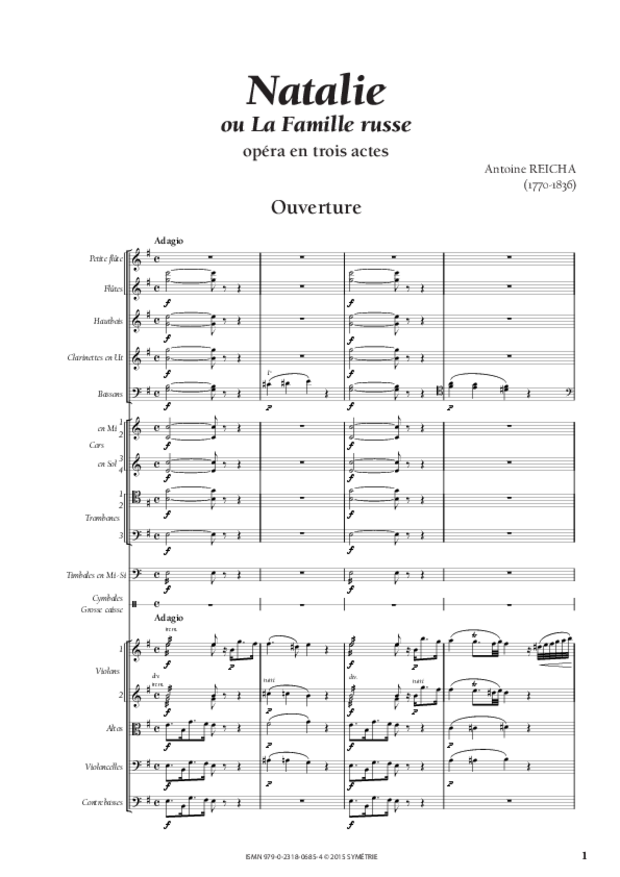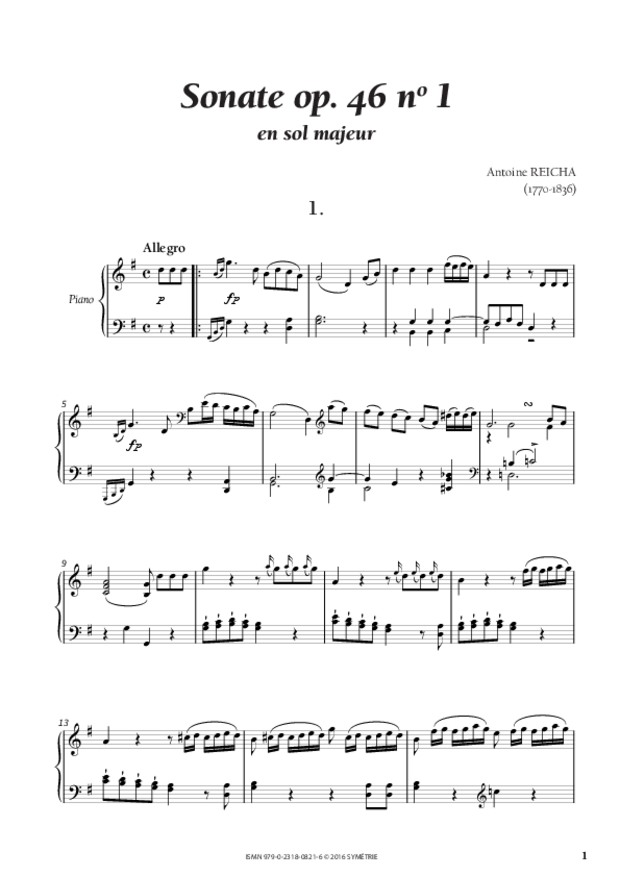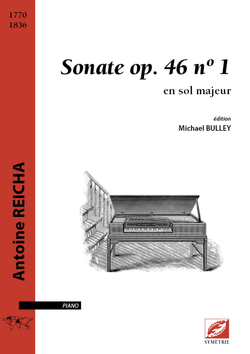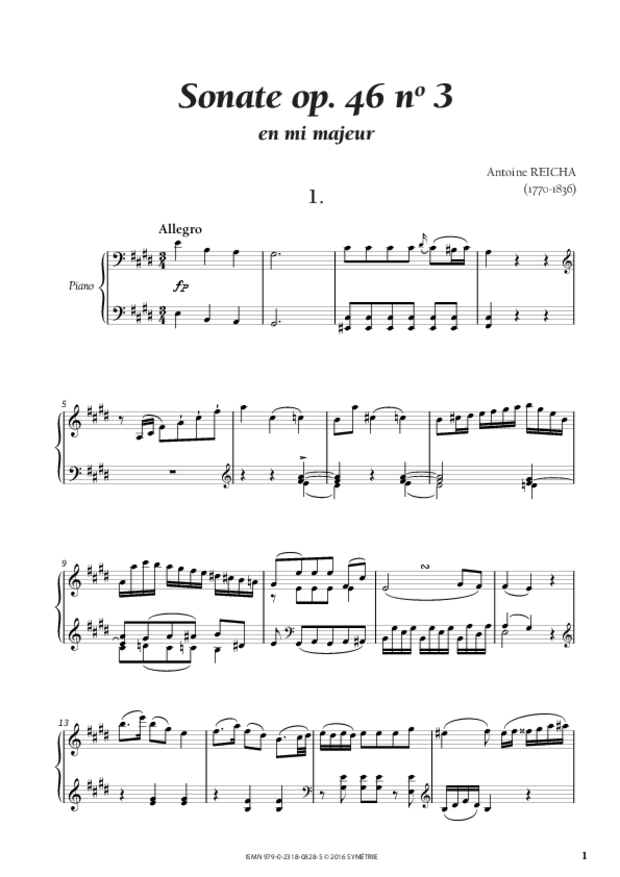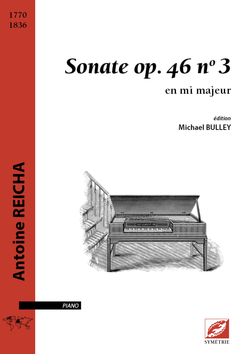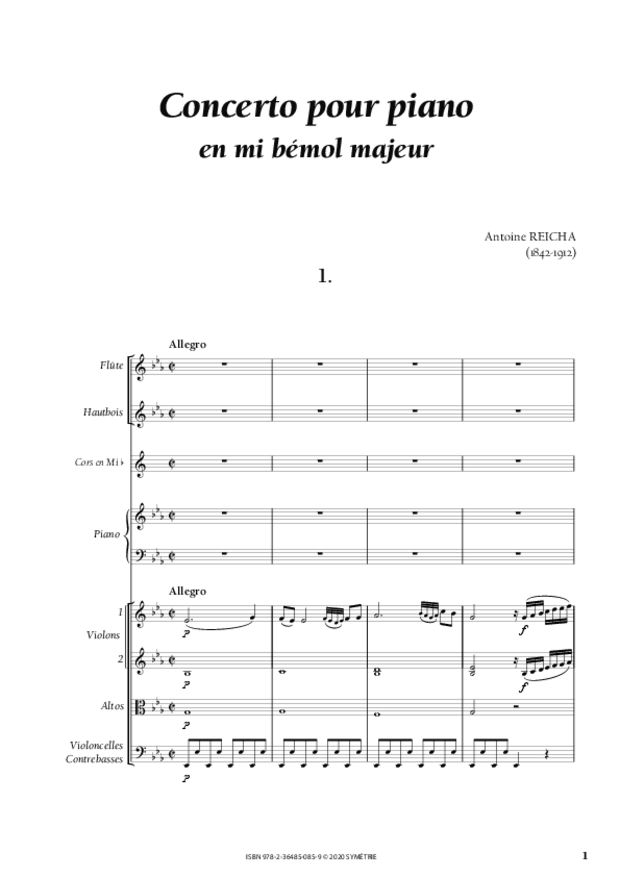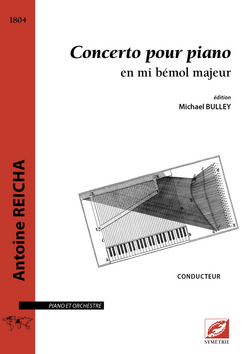This edition of 20 Studies or Exercises for the piano, Op. 30, is based on that published by Imbault in Paris in about 1800. The full original title is (in French) “Studies or Exercises for the pianoforte, organised in a new manner” and underneath that “for those who aspire to a mastery of the piano and for those who, having achieved it, wish to maintain it” and that the work can serve as a “continuation of the piano method of Citizens Adam and Lachnith.”
In his preface, which we give here in full, Reicha explains that his aim is to offer studies that have a musical interest, rather than just being technical exercises, and he says he is the first to do this for the piano. This claim seems to be justified, as the sets of piano studies of Cramer, Clementi, Steibelt and others came later. One could say that it was Chopin who finally established the “artistic” étude with his sets of 1833 and 1837. It is not known, however, whether Chopin was familiar with Reicha’s earlier collection.
These études, then, are as much exercises in composition as examples for practising certain techniques, and some of the pieces are so unusual as to have no equivalent in other music of the time. As the pianist Henrik Löwenmark writes:
The compositional element is central, not least harmonically, even in the few pieces that are more exercises than creative works. It is obvious that Reicha wants to […] offer a toolbox for would-be composers.
One sees similarities, therefore, with Reicha’s 34 Studies for piano of 1820, which he describes as “for the use of young composers” and that contain instructive notes on several of the pieces.
The work is divided into two parts, each containing ten studies. Those of the first part have titles, such as “Les cadences” or “Les accords brisés”, whereas those of the second are either without a title, other than the number of the study, or have also a subsidiary indication, such as “La fugue” or “Mesure composée”. Some of the pieces of the second part are also found in other collections: Nos. 2, 3, 8 and 10 in the collection Practische Beispiele, and No. 9 in the 36 Fugues.
In the edition by Imbault, we find, before each half of the collection, a set of remarks by Reicha, which we include in the present edition. Each of the five remarks of the first part consists of a brief text followed by a musical example. In our edition, we have placed them just after the study they refer to, rather than at the beginning. The three remarks of the second part consist of a substantial text without any musical example. For consistency, we have likewise placed them after the study in question.
The title of No. 8 of the first part is “Les clefs” and Reicha frequently changes the clef in the upper stave, employing various C clefs as well as the customary G. His remark on this study simply consists of the whole piece rewritten with only the two normal clefs, as we have done immediately afterwards. In Exercise 10 of the second part, Reicha similarly employs C clefs for certain passages. In view of the complexity of this piece, which is written on four staves, we have supplied an extra version which uses only the usual clefs of G and F, even though such a version is not found in the original edition. The tenth study of the first part is called “L’Enharmonique” and here we have followed Reicha in preserving the two different key signatures, G flat major for the upper stave and F sharp major for the lower. We think this should not cause too much difficulty for the player.
Reicha’s remarks are, for the most part, self-explanatory. It is only to those of No. 4 of part two that some supplementary information may be useful. This piece is in 58, comprising 38 + 28. Reicha’s remarks here are similar to those in his commentary on No. 3 of his Practische Beispiele, likewise in 58. That piece existed also as an individual manuscript having the title Mesure composée. There are other pieces by Reicha in 58, such as No. 20 of the 36 Fugues, which Reicha describes as a sort of waltz, comparing it with folk music in the same metre. There is also an overture for orchestra, a duo for violin and piano and the final movement of the Quatuor scientifique for string quartet.
Nomenclature
piano
